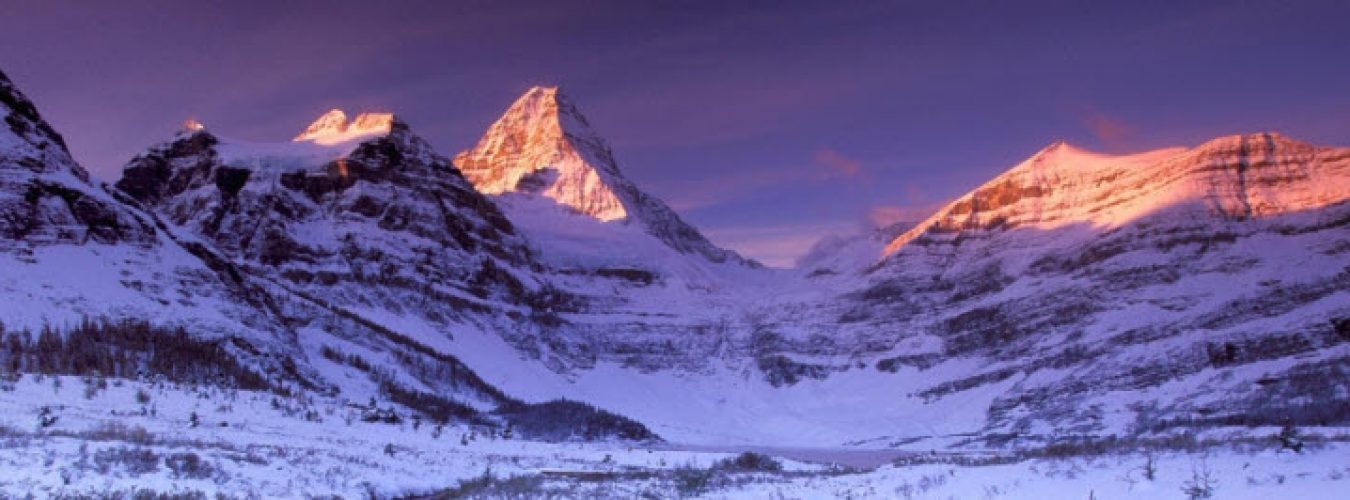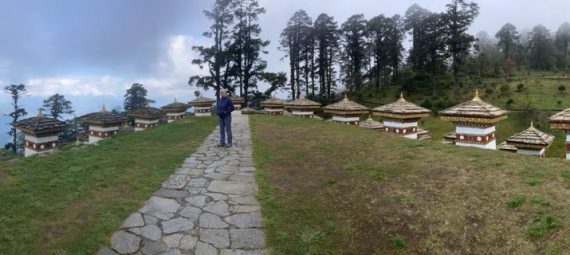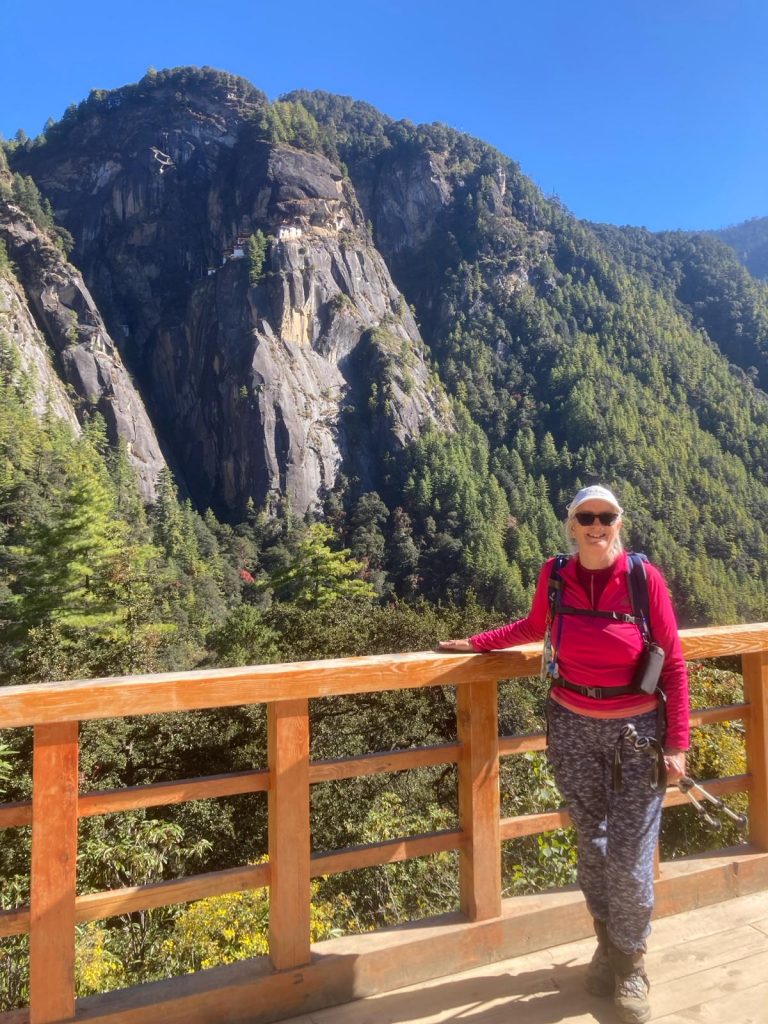3rd November 2022, Kathmandu
We are sitting in the resplendent Baber Mahal Vilas, a boutique hotel, nestling in a little oasis in Kathmandu. We returned here (for our third stay) yesterday late afternoon, after our trip to Bhutan.
We wanted to capture our experiences of Bhutan before starting our journey back to London tomorrow.
Bhutan is situated in the Himalayas between the two big powers of China and India. It has a population of 800,000 and occupies an area of about 38 thousand square kilometres, some of it lying at less than 100 metres in the south, with much territory covered by mountains. Mountains of less than 6,500 metres (21,300 feet) are not named as they are too numerous and there are many mountains over 7,000 metres.
The King has focussed on keeping the country’s culture alive, to help it maintain its independence. This involves a requirement for certain workers to dress in traditional garb and only two local TV channels.
Our first glimpse of Bhutan followed our flight across the Himalayas, passing Everest, and descending steeply into Paro airport, hugging the mountains, seemingly with farmers in their terraced fields above us! A difficult runway to land on with very few pilots licensed to land there. The terminal gave us our first sight of the highly decorated buildings, we would see everywhere, no matter how recently constructed.
The first road was only built in 1964 and they are remarkably well maintained, despite their elevation and the monsoons. There are twenty districts and a stupa marks the boundary as you drive from one district to the next. Also, there are no jumbles of electric cables alongside the roads.
Bhutan has lots of water and collects it in hosepipes in the mountains to provide water to the villages. The fast-flowing rivers are also used to generate hydroelectric power, which is sold to India.
The weather was surprisingly warm during the day in the sunshine, but cold at night. We were surprised by the comparative luxury of the accommodation; we were provided with duvets, as well as blankets on top, and in one hotel, an electric blanket. The rooms were all spacious and some were beautifully decorated with traditional colourful woodwork and furnishings.
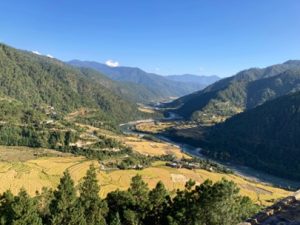
The Bhutanese love chilli with much of their food. You see rooftops shining red with chillis drying in the sun. The land is very fertile and we were blessed with lots of fresh vegetables, rice (including red rice), potatoes and chicken. There is a delicious side dish of chilli and cheese, which is wonderful, but lip-burning! They also serve beer, which is stated to be less than 8% proof! We preferred the local cuisine but there was an excellent pizza restaurant in Paro.
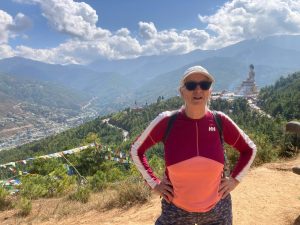
The countryside is varied, with temperate forests, blue pine forests, rhododendrons and bamboo. There is a huge variety of plants, including jasmine, poinsettia, white trumpet flowering bushes, passion flowers, gooseberry bushes and banana trees, as well as many flowers. We saw monkeys, yaks, cattle, deer, horses and the takin.
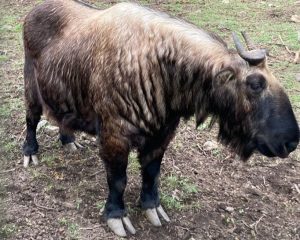
We drove high up in the mountains and went through the Dochu La Pass twice, with its 108 chortens, to commemorate the loss of life in dealing with terrorists from Assam. The first time the mists gave it a magical air. The second time, the blue skies afforded us magnificent views of the snow-capped Eastern Himalayas.
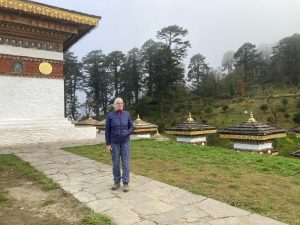
About 84% of the population is Buddhist and 11% Hindu. Each district has a Dzong, which combines the dual system of government, a civil administration and a monastery for religious matters. So we visited many, many temples and monasteries, hearing stories from Buddhist folklore, but having to commit images to our memory because no photography was allowed in the temples.
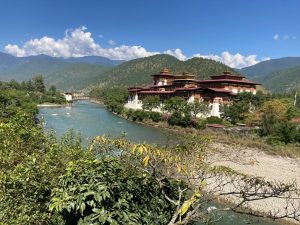
Some of the temples were very old (7th or 8th century), some smelt of yak butter candles and all were beautiful and ornate. We drove to the big Buddha, Buddha Dordenma, overlooking Thimphu, and marvelled at the thousands praying for peace, under canvas. We climbed to the Khamsum Yulley Namgyal Chorten, with magnificent views of the Punakha valley, the people harvesting rice, but also boasting sandflies.
We went to the Fertility temple, Chimi Lhakhang, a pleasant walk between the fields before a short climb to the temple.
We went to a small temple, Kyichu Lhakhang, built in the 7th century in beautiful gardens, patronised by the King’s mother.
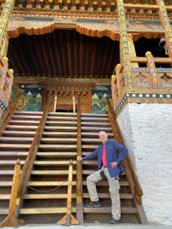
Some of us went to the monastery at Gangtey Goenpa, to sit cross-legged and hear the monks chanting and praying, banging their drums and blowing the long horns, a magical experience, slightly tinged by some of the younger boys using their smartphones.
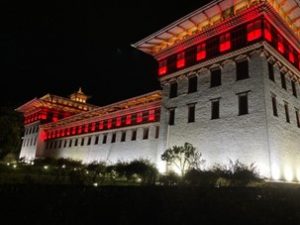
And everywhere there were prayer wheels of all different sizes, often ringing a bell as they turned. Some were turned by water as a stream passed by.
But nowhere compares to Takshang, the Tiger’s Nest, nestling high up, clinging to the cliff edge, with its steep staircase approach, hanging out over the precipice. We climbed 820 metres (2,700 feet) to reach it. It was built in the 16th century, but renovated after a fire in 1998: an awesome experience.
Our favourite place was Phobjikha, as far east as we travelled, where we felt that things were less choreographed. The valley lay at 3000metres (9,500 feet) and there was a ground frost in the morning. The locals, prepared a fantastic picnic for us, rice, vegetables and chicken together with black tea. We visited a house, where we had a welcome alcoholic butter tea and rice drink (at least some of us did!)
We went to a farmhouse near Paro where we enjoyed a hot stone bath and a real feast of food, ( and another unpalatable welcome drink), and brought some Bhutanese whisky which was very drinkable. We also picnicked by the river near Punakha, where we fed the stray dogs our left-overs.
Bhutan is famous for focussing on Gross Domestic Happiness as a measure of its national wealth. Schools teach in English and students receive grants to attend university abroad. Hospitals and health facilities are being opened to improve people’s lot. There were a surprising number of cars, relative to the number of roads; very few motorbikes ( compared to Nepal).
Due to Covid, the country has been closed to tourism for 2 years, which it aims to limit to 100,000 tourists per annum. Because we arrived the month after the country had re-opened, we enjoyed the lack of crowds.
We would like to visit more of the “ real” Bhutan in the future. We loved the countryside and there are some magnificent treks.
Our guide was fantastic, filling my head to capacity with his tales of grand Buddhist persona, demons and political giants. We found it disconcerting that many homes and temples display photographs of the current king, his family and his predecessor, despite the monarchy’s recent accession to the throne in 1907.
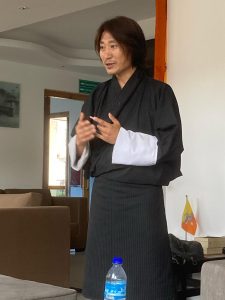
We are sure our itineraries have to be vetted by a government ministry to ensure we don’t pollute their culture. Interaction through commerce seems regulated too, to avoid a descent into greedy capitalism, which would be at odds with their approach to community. A very interesting, enjoyable kingdom to visit with clear standards to avoid a capitalist society and limit climate change.

